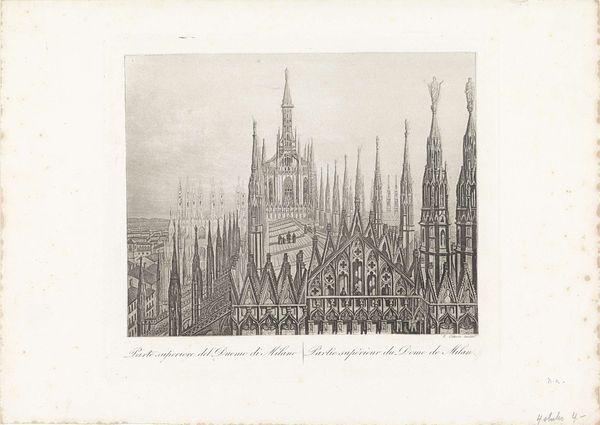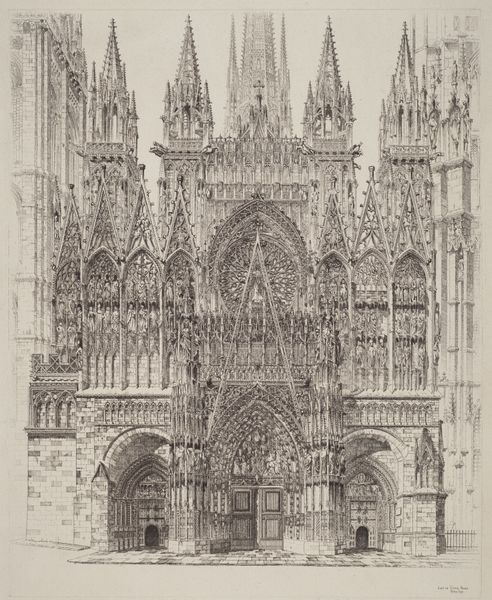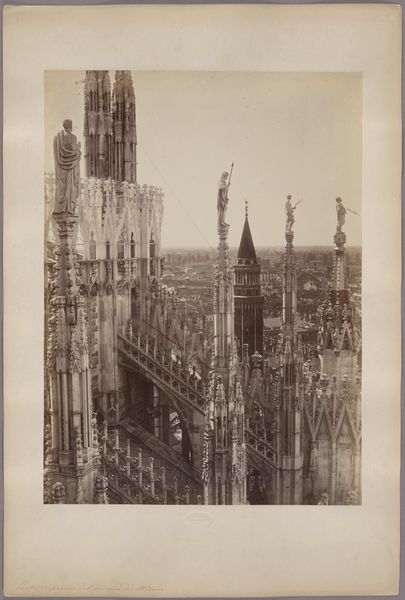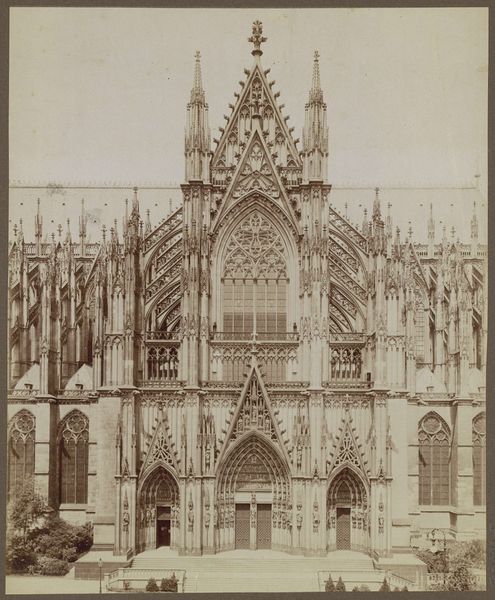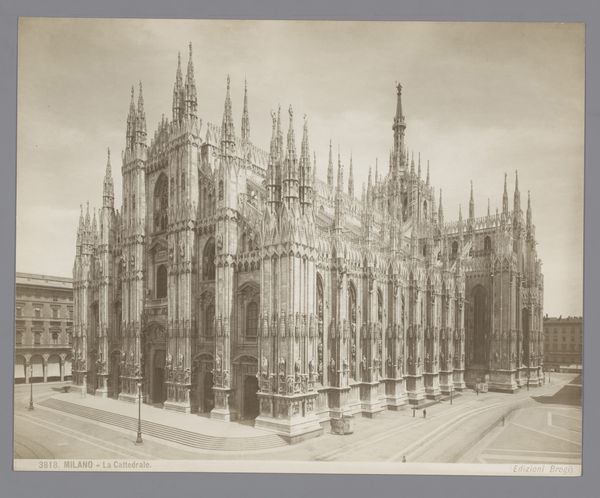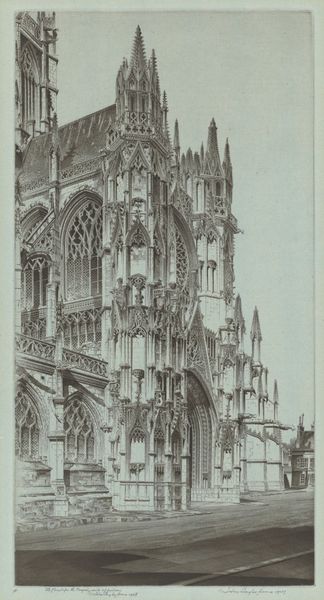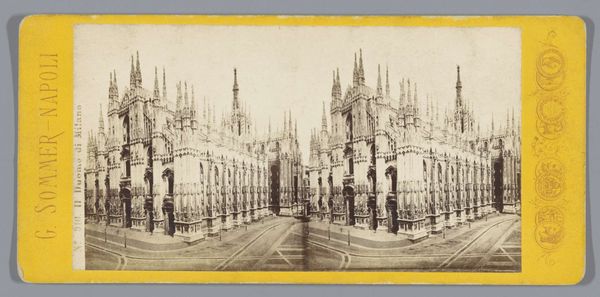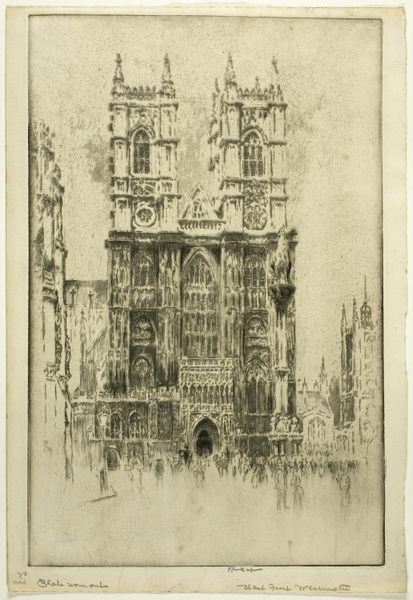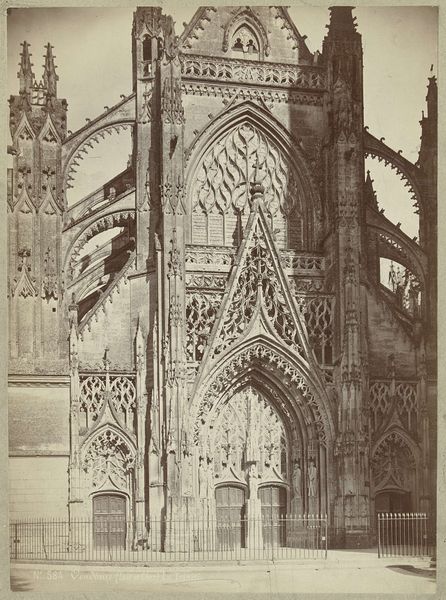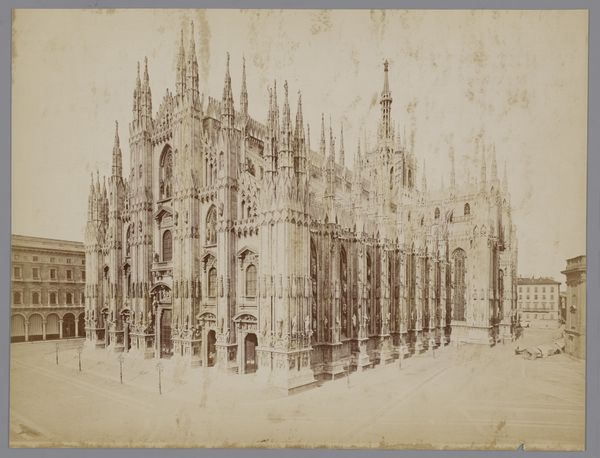
print, photography, albumen-print, architecture
#
aged paper
# print
#
old engraving style
#
landscape
#
photography
#
cityscape
#
albumen-print
#
architecture
#
realism
Dimensions: height 90 mm, width 55 mm
Copyright: Rijks Museum: Open Domain
Editor: So this is "Sculptuur en pinakels van de Dom van Milaan," a photograph from somewhere between 1865 and 1890 by I. Calzolari, done in albumen print. It's got such a stunning, almost overwhelming amount of detail. What catches your eye when you look at it? Curator: The intense verticality, undoubtedly. Consider that this image was created at a time of great political and social upheaval in Italy. These towering spires can be seen as assertions of power, perhaps reflecting the dominance of the Church or, conversely, a yearning for stability in a rapidly changing world. How do you see the role of architecture here? Editor: That's fascinating! I hadn't considered the political angle at all. I was mostly focused on the aesthetics of it. It does make me wonder who the intended audience for the photo was. Tourists? Curator: Possibly tourists, but more broadly, the rising bourgeoisie. Photography like this helped shape a national identity and celebrated industrial progress. These images made landmarks accessible and reinforced notions of cultural heritage and perhaps class aspiration. Editor: So it’s more than just a pretty picture. Curator: Precisely. Photography served a crucial function in constructing a national narrative, defining who belonged and what was valued. I wonder what kind of narratives people are creating with photographs now? Editor: This gives me so much to think about concerning the intentions behind landscape photography, and how deeply connected they are to the power structures of the time. Curator: Indeed! Examining art through this lens provides a richer understanding of both its historical significance and its continuing impact on us today.
Comments
No comments
Be the first to comment and join the conversation on the ultimate creative platform.
